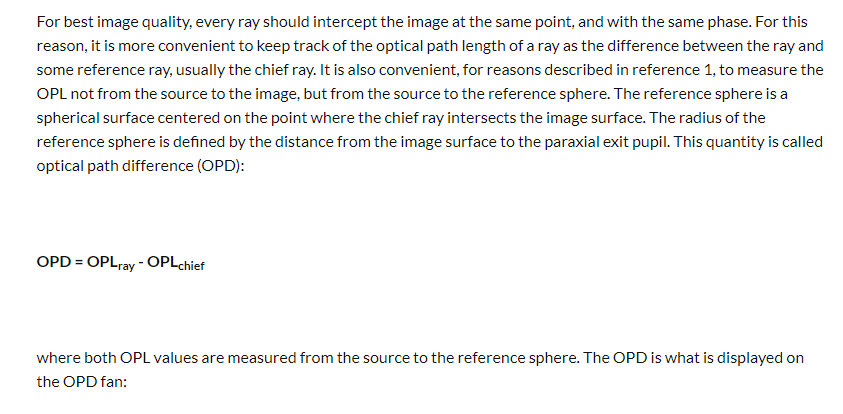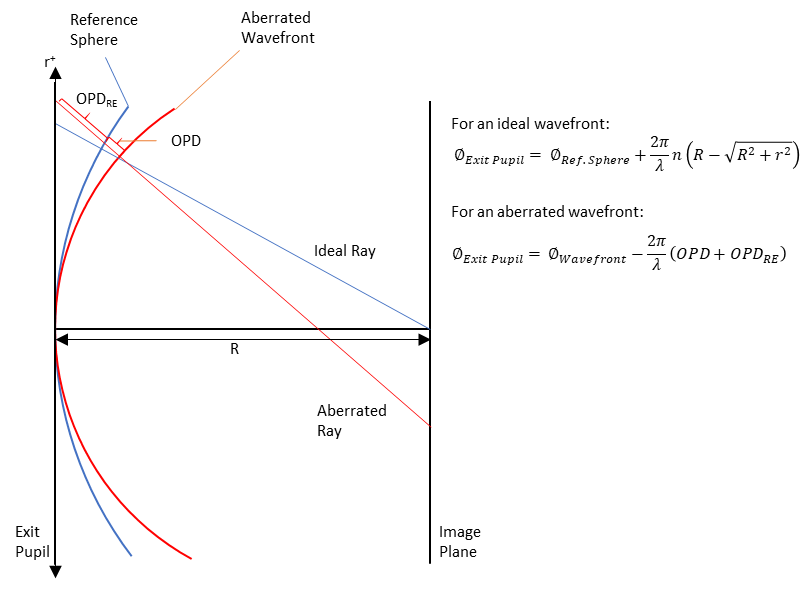Hello,
I have been looking for a way of obtaining the complex electric field of a system. My goal is to use the aberrated wavefront as input for a different system. I understand the Wavefront Map tool gives the wavefront aberration with respect to a reference sphere at the Exit Pupil, but I would like to know if there is a way to get the phase or OPL up to a reference plane of equal diameter as the Exit Pupil without having to do a ray trace and use OPTH iteratively. I was looking at this post about the Hyugens PSF and it seems like the Pupil Function might be what I need. I would appreciate any clarification as well as any guidance on how to obtain it.
Thanks in advance.






